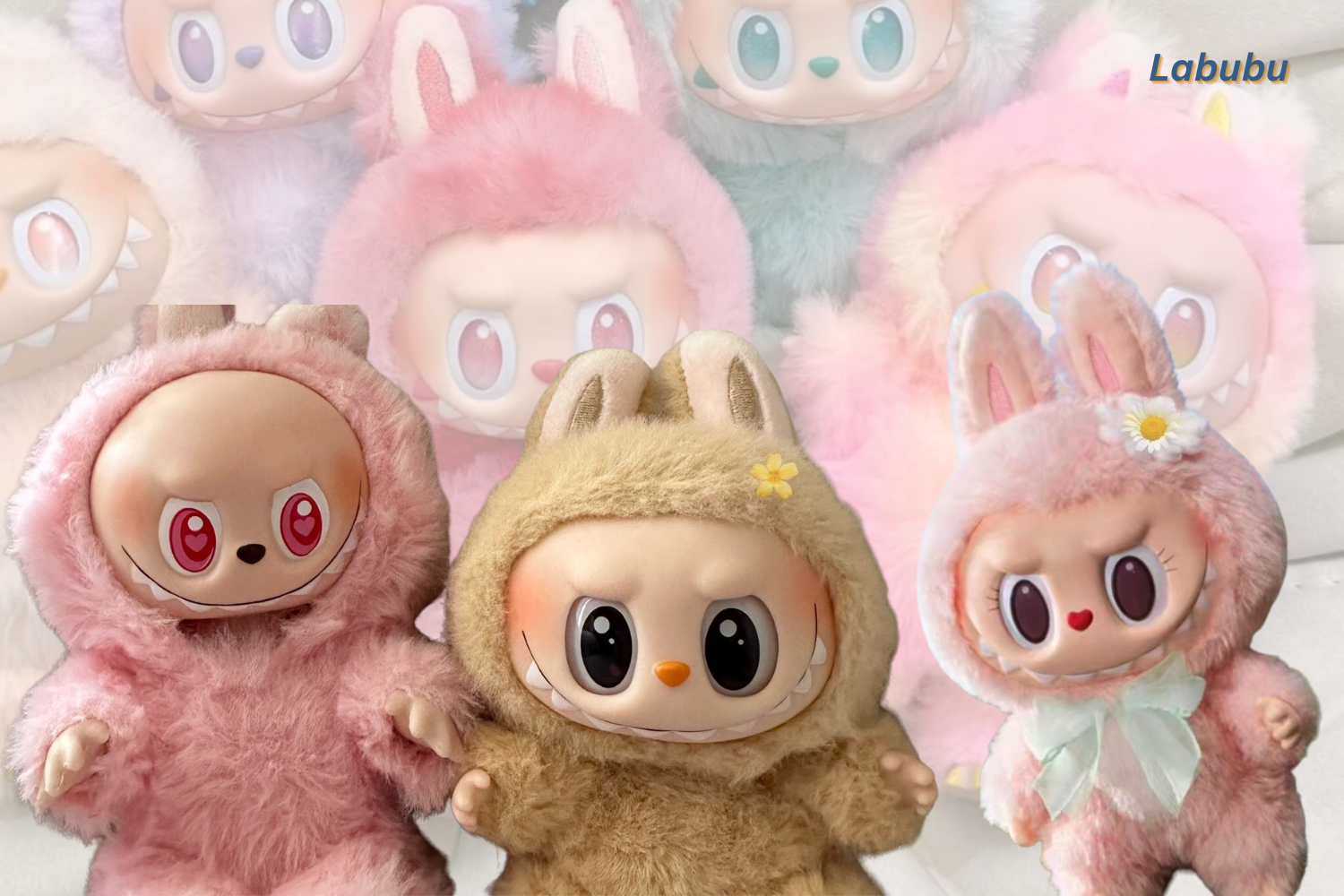Labubu Dolls: Origin Myths &Reality
Ankita
. 4 min read
The name "Labubu" comes directly from its creator, Kasing Lung, a Belgian-Chinese illustrator known for whimsical, fairy-tale-like monster characters. Labubu dolls may appear as cute collectibles, but behind the glittering pop culture hype lies a complex blend of psychological marketing, consumerism, and the commodification of art.

The Origin of Labubu
Labubu dolls have taken the global collectible market by storm, blending fantasy art, emotional storytelling, and addictive consumer appeal. Originating from the whimsical world of The Monsters, created by Belgian-Chinese artist Kasing Lung in 2015, Labubu is a mischievous, elf-like character with exaggerated features, pointy ears, a wide grin, and wild eyes. Labubu’s design falls under the “ugly-cute” category, which has struck a deep chord with Gen Z, millennials, and art toy collectors. Unlike traditional cartoonish toys, Labubu evokes a mix of rebellion, innocence, and vulnerability, making it feel like more than just a figure; it becomes a character with which people can emotionally connect.
The Blind Box Strategy: Gamifying the Collectible Experience
Labubu's inclusion in Pop Mart's "blind box" ecosystem, which made it famous. In this model, consumers purchase sealed boxes without knowing which variant they are getting, a strategy that combines surprise, scarcity, and the thrill of discovery. This gamified experience drives collectors to buy multiple boxes in pursuit of rare or limited-edition versions. Some of these exclusive Labubu figures now sell for hundreds or even thousands of dollars on the resale market, turning them into status symbols within the collector community. In 2024 alone, Labubu dolls generated over $400 million in revenue, representing a staggering 726% year-over-year growth, largely driven by this highly engaging sales model.
The Role of Social Media and Celebrity Influence
Social media has played a significant role in Labubu’s meteoric rise. TikTok, Instagram, and YouTube are flooded with unboxing videos, collector shelf showcases, and fan art, creating a tight-knit, global community around the character. The fandom expanded even further when celebrities like BLACKPINK’s Lisa, Kim Kardashian, and Dua Lipa openly expressed their love for Labubu. Their endorsement elevated the toy from niche collectible to fashion-forward cultural icon. International expansion has also contributed to growth, with Pop Mart opening stores and installing vending machines in cities across Asia, Europe, and the United States.
More Than a Toy: Emotional Connection and Personal Meaning
At its core, the growing obsession with Labubu is deeply emotional. For many, Labubu represents an imaginary friend, an embodiment of childhood fears, wild dreams, and untamed imagination. Unlike traditional toys, it feels raw, real, and soulful. This emotional connection, combined with artistic design and marketing brilliance, makes Labubu not just a product but a phenomenon. It is not just about collecting toys; it’s about collecting pieces of a magical, misunderstood world that people see themselves in. As trends in fashion, fandom, and psychology continue to favor the quirky and the emotionally complex, Labubu is well-positioned to remain a global obsession for years to come.
Myths and Truth About Labubu Dolls
Labubu, despite being a fictional art toy, has sparked several myths and urban legends, especially due to its unusual design and emotional backstory. Here are some of the most talked-about myths:
1. Labubu Brings Bad Luck
Myth: Keeping a Labubu doll at home can bring bad luck or emotional instability.
Truth: There is no evidence or cultural basis for this. Labubu is just a collectible figure. The idea likely comes from its eerie design and dark facial expressions.
2. Labubu Is Possessed or Haunted
Myth: Some believe certain rare Labubu dolls are "haunted" or spiritually charged.
Truth: This is purely superstition. POP MART mass-produces Labubu dolls with no connection to the occult or supernatural.
3. Labubu Is Based on a Demon (Pazuzu)
Myth: Labubu’s design is inspired by the ancient demon Pazuzu, known from The Exorcist.
Truth: While there are visual similarities (sharp teeth, wild grin), there is no confirmed connection. Labubu was inspired by artist Kasing Lung’s fantasy world and emotional storytelling, not demonology.
4. Labubu Is a Bad Omen for Children
Myth: Some parents believe Labubu dolls shouldn’t be kept around kids due to their "scary" appearance.
Truth: Labubu is just a fantasy creature. It may look strange, but it has no harmful influence. It’s more of an art piece than a child’s toy.
5. Labubu Causes Nightmares
Myth: People say having Labubu in the room causes disturbing dreams.
Truth: This is anecdotal and not based on any psychological fact. The design might be unsettling for some, but it doesn’t have any proven effect on sleep.
FAQ
Are Labubu dolls evil or cursed?
Why do people think Labubu is linked to demons like Pazuzu?
What is the real meaning behind Labubu?
Is buying Labubu dolls harmful or bad luck?
More Stories from
How did India respond to Donald Trump's 25% tariff penalty on India?
Trade tensions between the United States and India have sharply increased as a result of this recent development. Know how India responds to Donald Trump's 25% tariff penalty on India.
Geoffrey Hinton's AI Warning: The Most Dangerous Invention Ever
AI is both beneficial and dangerous, depending on how it is developed, deployed, and regulated.
Unbelievable Facts about World History that will surprise you
Human history and the natural world are filled with mysteries, marvels, and strange truths that challenge our understanding. In this article, we will explore some unbelievable facts about world history.
Why skill-based hiring is gaining importance over degrees?
Skill-based hiring vs Degree, which matters first? what you can do” matters more than “what degree you hold.”
The Hidden Secret of the Great Pyramid’s exposed
With the development of scientific instruments and technology, each day, discoveries about the world are surprising us





